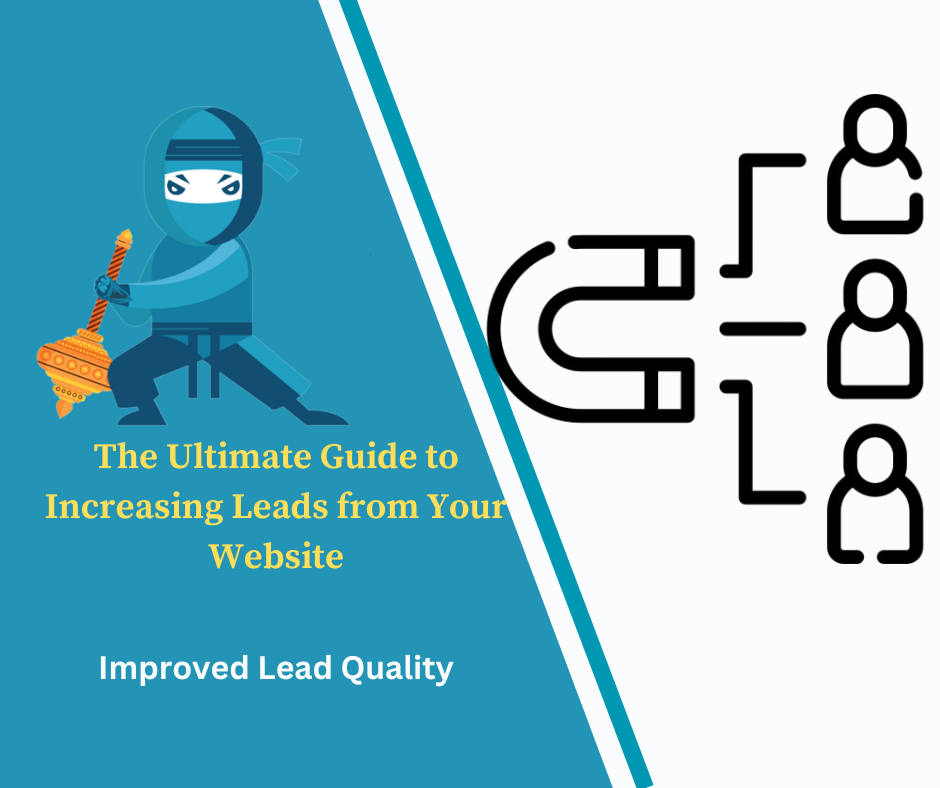The Ultimate Guide to Increasing Leads from Your Website
Increasing leads from your website is a critical objective for businesses looking to expand their reach and drive sales growth. In this ultimate guide to increasing leads, we’ll explore effective strategies, actionable tips, and best practices to transform your website into a powerful lead-generation tool. Whether you’re new to lead generation or seeking to refine your approach, this guide will help you attract, engage, and convert more visitors into valuable leads.
Understanding Lead Generation
Lead generation involves attracting potential customers and encouraging them to express interest in your products or services. Effective lead-generation strategies focus on capturing visitors’ information and nurturing these prospects into customers. A well-optimized website plays a crucial role in this process by providing opportunities for visitors to become leads.
What does a lead-generating website mean?
A lead-generating website is a website designed specifically to attract, engage, and convert visitors into potential customers or leads. The primary goal of such a website is to capture visitors’ contact information, which can then be used for follow-up and nurturing to turn them into customers.
Also read: How to Turn Your Website into a Lead Generation Machine
How It Works:
Attracting Traffic: The website uses various methods like SEO, content marketing, and paid ads to drive traffic to the site.
Engaging Visitors: Once visitors land on the site, they encounter valuable content and engaging elements that encourage them to explore further.
Capturing Leads: Visitors are prompted to provide their contact information through forms or CTAs, turning them into leads.
Nurturing Leads: The collected leads are then nurtured through follow-up emails, targeted offers, and personalized communication to move them through the sales funnel.
Key Strategies for Increasing Leads
1. Optimize Your Website for Conversions
Website optimization is fundamental to lead generation. Your website should be designed to capture visitors’ attention and guide them toward taking action. Here are some critical elements to focus on:
Clear Call-to-Actions (CTAs): Ensure your CTAs are prominent, compelling, and strategically placed on your website. They should direct visitors to perform actions such as signing up for newsletters, downloading resources, or requesting a demo.
Landing Pages: Create dedicated landing pages for specific offers or campaigns. These pages should be focused, persuasive, and free of distractions to maximize conversion rates.
Forms: Optimize your lead capture forms to be user-friendly and straightforward. Avoid asking for too much information upfront, as this can deter potential leads.
2. Leverage Content Marketing
Content marketing plays a significant role in lead generation. High-quality, relevant content can attract and engage your target audience, ultimately driving them to convert. Here’s how to leverage content marketing effectively:
Create Valuable Content: Develop content that addresses your audience’s pain points, provides solutions, and adds value. This can include blog posts, eBooks, whitepapers, and infographics.
Offer Lead Magnets: Use lead magnets such as free guides, templates, or webinars to entice visitors to provide their contact information. Ensure your lead magnets are highly relevant and valuable to your audience.
Use SEO Strategies: Optimize your content for search engines to increase organic traffic to your website. Focus on relevant keywords and ensure your content is easily discoverable.
3. Utilize Social Proof
Social proof can significantly impact your lead-generation efforts. Positive reviews, testimonials, and case studies can build trust and credibility with potential leads. Here’s how to incorporate social proof into your website:
Customer Reviews and Testimonials: Display genuine reviews and testimonials from satisfied customers to build trust and encourage visitors to take action.
Case Studies: Share detailed case studies that highlight the success stories of your clients. This can demonstrate the value of your products or services and persuade potential leads to convert.
4. Implement Email Marketing
Email marketing remains one of the most effective lead-generation strategies. By nurturing your leads through targeted email campaigns, you can build relationships and encourage conversions. Consider the following tips:
Segmentation: Segment your email list based on demographics, behavior, or interests to deliver personalized content and offers.
Automated Campaigns: Set up automated email campaigns to engage leads at different stages of their journey. This can include welcome emails, follow-up sequences, and re-engagement campaigns.
A/B Testing: Test different email elements such as subject lines, CTAs, and content to determine what resonates best with your audience.
5. Invest in Paid Advertising
Paid advertising can help drive targeted traffic to your website and increase leads. Consider using the following ad platforms:
Google Ads: Use Google Ads to target specific keywords and drive traffic to your landing pages or lead capture forms.
Social Media Ads: Leverage social media platforms like Facebook, LinkedIn, and Instagram to reach your target audience with tailored ads.
Retargeting: Implement retargeting campaigns to re-engage visitors who have previously interacted with your website but did not convert.
FAQs
What is lead generation, and why is it important?
Lead generation is the process of attracting and converting potential customers into leads. It’s important because it helps businesses build a pipeline of prospects, increase sales opportunities, and grow their customer base.
How can I improve my website’s lead capture forms?
To improve lead capture forms, keep them simple and user-friendly. Only ask for essential information, use clear and compelling CTAs, and ensure the form is easily accessible on your website.
What are lead magnets, and how do they help with lead generation?
Lead magnets are valuable resources offered to visitors in exchange for their contact information. They help with lead generation by providing incentives for visitors to share their details, thus increasing the number of leads you can capture.
How can social proof influence lead generation?
Social proof, such as customer reviews and testimonials, builds trust and credibility with potential leads. When visitors see positive feedback from others, they are more likely to take action and convert.
What are some effective email marketing strategies for lead generation?
Effective email marketing strategies include segmenting your email list, using automated campaigns, and conducting A/B testing to optimize your emails for better engagement and conversion rates.
Conclusion
Increasing leads from your website requires a combination of strategic optimization, valuable content, social proof, and targeted marketing efforts. By implementing the tactics outlined in this guide to increasing leads, you can enhance your website’s ability to attract, engage, and convert visitors into valuable leads. Start applying these strategies today and watch your lead generation efforts flourish.








